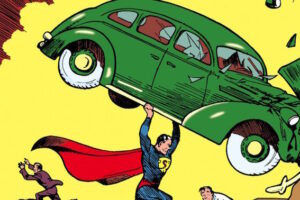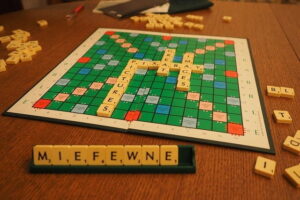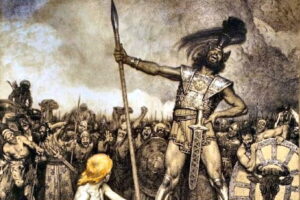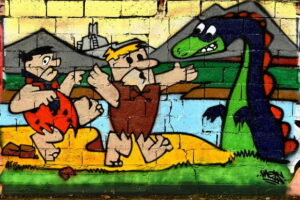10 Unexpected Pop Culture Moments That Took the World by Surprise
Everything we do has a purpose, whether we realize it or not. Every word we say, every action we take—it’s all driven by some kind of intention. Sometimes, things go exactly as planned, and other times, they spiral into something entirely unexpected. This isn’t just true for people; it applies to businesses, stories, inventions—pretty much anything created with a goal in mind. But reality is messy. Plans don’t always unfold the way they were supposed to.
Nowhere is this more evident than in the world of pop culture. There are countless things that were meant to work a certain way but didn’t. Maybe it was a small mistake, a random twist of fate, or a brilliant accident—whatever the reason, these missteps often lead to results no one saw coming. And yet, despite the chaos, some of these unexpected turns become legendary. The wrong idea at the right time, the failure that led to innovation, or the joke that wasn’t supposed to land but did—these are the moments that shape history in the most unpredictable ways.
From movies that flopped only to become cult classics, to inventions that were created by accident but changed the world, surprises are everywhere. And while not every mistake turns into a masterpiece, the ones that do remind us that sometimes, the best things in life come from the unexpected.
10.Why Slip ‘N Slides Are a Disaster Waiting to Happen for Adults
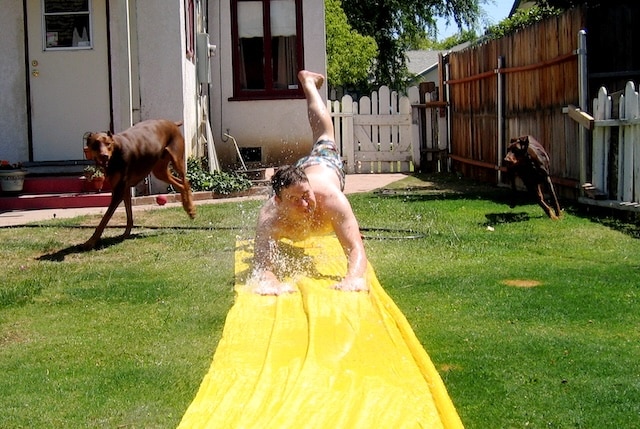
On a scorching summer day, few things seem more fun than a Slip ‘N Slide. To a kid, it’s pure backyard magic—just a long strip of plastic, a steady flow of water, and the promise of hours of slippery chaos. What could possibly go wrong?
Well, a lot—especially if you’re over 12.
The Slip ‘N Slide dates back to the early 1960s when a man named Robert Carrier saw his kids sliding across a wet, painted concrete driveway. They were having a blast, but the setup was hardly safe. So, Carrier decided to create something better. He used Naugahyde (a synthetic leather material from his workplace) to craft the first-ever Slip ‘N Slide in his yard. It didn’t take long for word to spread—soon, the entire neighborhood was hooked.
Like any great invention, it was patented, mass-produced, and quickly became a summer sensation. Even today, it remains a childhood staple. But here’s the thing: Slip ‘N Slides were never meant for adults or even teenagers.
The manufacturer strictly recommends them for kids under 12, yet year after year, teenagers and grown-ups throw caution to the wind—often with painful consequences. The reason is simple: physics. The slide works because a lightweight body can glide effortlessly across the water-slicked surface. But once you cross the 125-pound mark, things start to go wrong. Instead of a smooth ride, you risk getting stuck mid-slide, causing your momentum to shift abruptly. And guess what takes the hit? Your neck.
Over the years, there have been thousands of reported injuries—many involving spinal damage. In one particularly serious case, a man became partially paralyzed and sued the manufacturer, Kransco, winning a $12.3 million lawsuit (though the final settlement was lower). That was just one of many legal battles that followed.
The moral of the story? If you’re an adult eyeing a Slip ‘N Slide, it’s probably best to sit this one out. Or, at the very least, read the warning label before you go diving headfirst into regret.
9.The Hulk Was Never Meant to Be Green

The Hulk currently holds an unusual position in the Marvel Cinematic Universe. While all the other characters get to have solo movies, the Hulk is left out. That’s because another studio, Universal, still holds distribution rights to the Hulk. The big, green machine is stuck as a sidekick for now.
The idea of the Hulk as a big, green monster was not always in the cards. When he was created by Jack Kirby and Stan Lee, the Hulk was not green but gray. Inspired by Boris Karloff as Frankenstein, the Hulk was originally drawn as gray because Lee thought it would be scary but came out green due to a printing error.
The printing press that Marvel Comics was using at the time was not able to match the color of the original artwork. Some pages went too heavy on cyan, and some too heavy on magenta. From panel to panel, the Hulk’s color changed from gray to green and various shades in between. In the end, Stan Lee thought the green worked best, and had future issues stick with that one color.
8.Biz Markie Was Never Meant to Sing That Infamous “Just a Friend” Chorus

If you’ve ever heard Biz Markie’s 1989 hit Just a Friend, then you know the song’s most unforgettable feature—his off-key, almost painfully strained chorus. It’s the kind of thing that’s both bizarre and endearing at the same time, like a musical car crash you can’t help but enjoy. But here’s the kicker: Biz Markie never planned to sing it himself.
Back in the studio, the rapper had every intention of having someone else handle that now-iconic hook. He reached out, invited singers, set everything up—and then, when recording day came, nobody showed up. Not a single person. Instead of scrapping the session, Biz made a split-second decision. He grabbed the mic, belted out the chorus himself, and the rest is history.
Now, here’s where it gets even more interesting. Despite his reputation as a lighthearted, comedic figure in hip-hop, Just a Friend wasn’t supposed to be a joke. The song was based on a real experience—Biz had been genuinely burned in a relationship, and he meant for the track to carry that emotional weight. But when he had no choice but to sing the hook himself, the raw, off-key delivery unintentionally gave it a humorous edge. The music video leaned into this vibe, exaggerating the awkwardness even further.
Ironically, what could have been a disaster became the song’s greatest strength. Just a Friend blew up, becoming a cult classic that still gets radio play decades later. And all because no one showed up when they were supposed to.
7.Shaggy’s “It Wasn’t Me” was Never Supposed to Be On An Album

Shaggy has had several hit singles over the years and “It Wasn’t Me” may be his most well-known. The song, which at first sounds like an anthem about gaslighting your girlfriend after she catches you cheating on her, but ends with a bit more of a positive message about honesty, was huge when it was released in the year 2000. The thing is, it was never supposed to be.
Shaggy’s album Hotshot featured the track but the record label wanted a different song released as the first single. This was a struggle as the label didn’t like anything on the album at all. “It Wasn’t Me” wasn’t even supposed to have been recorded because Shaggy’s manager hated it. It was only by chance that Shaggy, working with Sting, had received some positive feedback and finished the track to include it. The vocals in the finished album were just demo vocals.
However, this was at the height of Napster as a file-sharing service and a DJ in Hawaii had downloaded the album and liked the song “It Wasn’t Me.” He started playing it on the radio and it became popular. The label saw the success and decided to make it a single instead.
6.The Swiss Family Robinson Were Never Meant to be Named Robinson
Johann David Wyss wrote Swiss Family Robinson in 1812. The adventure story, about a shipwrecked family, has been adapted into numerous TV shows and movies. Lost in Space, both the early show, the movie, and the later Netflix series, are sci-fi retellings of the tale and are arguably the most well-known adaptations. They all follow the adventures of the Robinson family in space.
It’s with some small degree of irony that the most popular adaptation of Swiss Family Robinson got the family’s name wrong. In the original story, they are not the Robinson family at all. The name of the family is never mentioned. Robinson comes from Robinson Crusoe, which is what inspired Wyss to write the story.
Any subsequent retelling of the story in which they use Robinson as the name is simply a mistake. It’s also a well-spread mistake as most people assume the family’s name was Robinson, even though that’s not a Swiss name, and the story never says as much.
5.Gandalf’s Famous “You Shall Not Pass” Was a Mistake by Ian McKellan.
Ian McKellan’s performance as Gandalf in the Lord of the Rings trilogy is extremely well-known, and he has many memorable lines. You could argue that the most famous line he utters is “You shall not pass” when squaring off with the Balrog in Moria, giving the rest of the fellowship a chance to escape.
McKellan admitted in interviews after the fact that, despite the popularity of the line, he messed it up. Tolkien didn’t write “You shall not pass” and the script didn’t ask him to say it. The line was “You cannot pass” and he simply misspoke. But the performance was so good and the meaning essentially the same that it stayed in the film.
4.Why You’re Not Meant to Fully Grasp 2001: A Space Odyssey
Stanley Kubrick’s 2001: A Space Odyssey is often hailed as one of the greatest sci-fi films ever made. It’s visually stunning, intellectually challenging, and has left audiences scratching their heads since its release. Despite its legendary status, the movie is famously difficult to understand—and that’s exactly the point.
When 2001 first hit theaters, even Hollywood stars like Rock Hudson were baffled. He reportedly walked out of a screening, frustrated and asking, “What the hell is this about?” He wasn’t alone. Countless viewers have spent years dissecting the film, writing essays, and debating its meaning online. But here’s the twist: you’re not supposed to “get it” entirely.
Arthur C. Clarke, the sci-fi genius who co-wrote the story with Kubrick, once said, “If you understand 2001 completely, we failed. We wanted to raise far more questions than we answered.” This deliberate ambiguity is what makes the film so fascinating. It’s not a puzzle to be solved but an experience to be felt. The movie invites you to ponder big ideas—human evolution, artificial intelligence, the mysteries of the universe—without handing you easy answers.
In fact, Clarke himself found the film’s ambiguity amusing. He once shared a story about an immigration officer who refused to let him into the U.S. until he explained the movie’s ending. Even the co-creator couldn’t—or wouldn’t—provide a straightforward explanation.
So, if you’ve ever watched 2001: A Space Odyssey and felt lost, don’t worry. You’re in good company. The film isn’t about understanding every detail; it’s about embracing the mystery and letting your imagination run wild. And honestly, isn’t that what great art is all about?
Whether you’re a sci-fi fan or just someone who loves thought-provoking stories, 2001 is a must-watch. It’s a cinematic journey that challenges, confuses, and captivates—all while reminding us that some of the best questions are the ones without clear answers.
3.Spock Was Supposed to be Martian

One of the most well-known and beloved characters in all of pop culture, most of us recognize Star Trek’s Spock as a Vulcan, a fictional species from a fictional planet. That was not always the destiny of Leonard Nimoy’s character, however. He was not supposed to be Vulcan originally, but rather a Martian.
With a red tint to his skin, Spock’s origin in the early days of Gene Rodenberry’s vision was as a Martian. However, Roddenberry had a change of heart when he decided that it was likely man would reach Mars in the near future. He didn’t want to have a Martian on his show if people were going to be alive to see the real Mars and realize his creation wasn’t authentic, so he swapped Mars for a fictional world. That way the audience could never be disappointed.
There is a second reason that has been given for Spock’s change of origin and that is more practical. Spock’s would-be red skin didn’t look good on TV. Since many TVs were black and white when Trek first aired, the makeup made Nimoy look like he was in blackface. They opted for a yellowish-green tint instead.
2.Aslan Is Not Meant to Be an Allegory for Christ
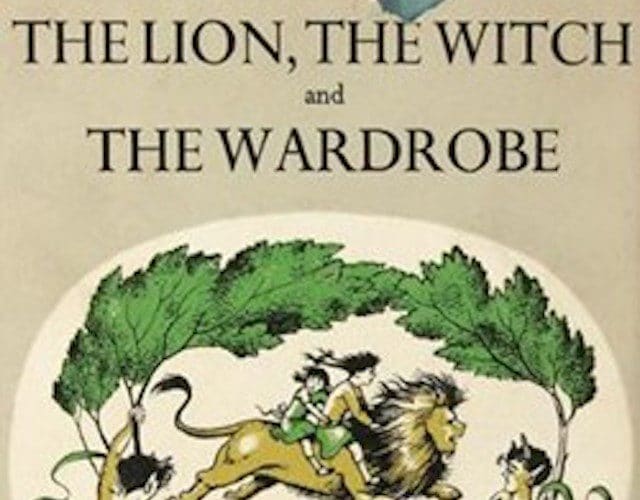
It’s no secret that The Chronicles of Narnia by CS Lewis are meant to be read allegorically. Lewis was a Christian and included a lot of Christian allegory in his works. That has led many to view the character of Aslan the lion as an allegory for Jesus Christ, which can be found in criticisms and study guides all over the internet.
In a fun twist, Aslan is not meant to be an allegory for Jesus. Now, if you’re thinking, “How could that be? He’s clearly a Christ figure in the story,” you’re not wrong. It’s just that he’s not supposed to be an allegorical figure. Lewis meant for him to literally be Jesus.
For Lewis, it works like this: In our world, Jesus was a man, the son of God. In Narnia, because the place is full of mythical beasts and magical animals, he imagined that God would send his son, not as a man, but as something else that fit into that world. in this case, a talking lion. He said as much in a letter he wrote to Anne Jenkins, a girl who wrote to the author to ask him to explain what the story meant.
1.The Blair Witch Almost Made It On-Screen—But a Simple Mistake Changed Everything
Few horror films have left a lasting impact quite like The Blair Witch Project. With its raw, documentary-style storytelling and chilling ambiguity, it revolutionized the found footage genre. But one of its most fascinating aspects? The Blair Witch herself never actually appears on screen. This wasn’t always the plan—audiences were supposed to catch a fleeting glimpse of the infamous entity, but an unexpected filming error turned absence into a powerful tool of fear.
The film, made on a shoestring budget, relied heavily on improvisation and real-time reactions. This approach led to an eerie sense of authenticity, but it also meant that certain moments didn’t go as planned. One of the most intriguing slip-ups happened during a nighttime chase scene in the woods. In the heat of the moment, as chaos unfolded and fear overtook the characters, actor Joshua Leonard, who was handling the camera, failed to pan left at the critical moment. Had he done so, viewers would have seen a figure dressed in white—none other than art director Ricardo Moreno, who had been stationed there to embody the elusive Blair Witch.
This accidental omission may have been one of the best mistakes in horror history. By leaving the witch unseen, the film amplified psychological terror, forcing audiences to imagine what lurked in the darkness rather than being shown outright. The power of the unknown—of something just beyond the frame—made The Blair Witch Project an unforgettable experience, cementing its place as a genre-defining masterpiece.
Imagine how different the film might have been if that single camera movement had captured the witch. Would it still have held the same bone-chilling mystique? Would audiences have been as haunted by what they didn’t see? Sometimes, the scariest things are the ones left to the imagination.



